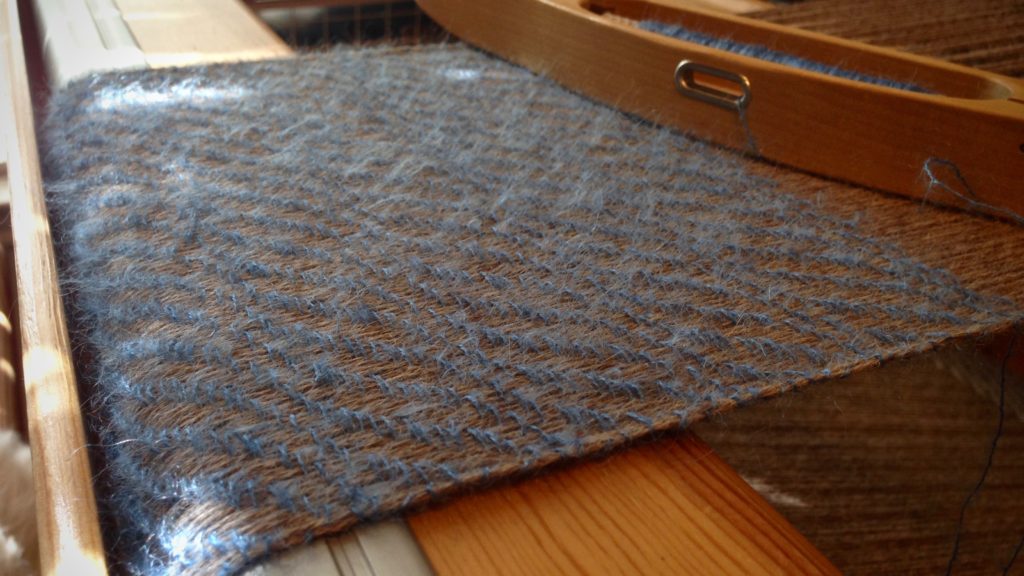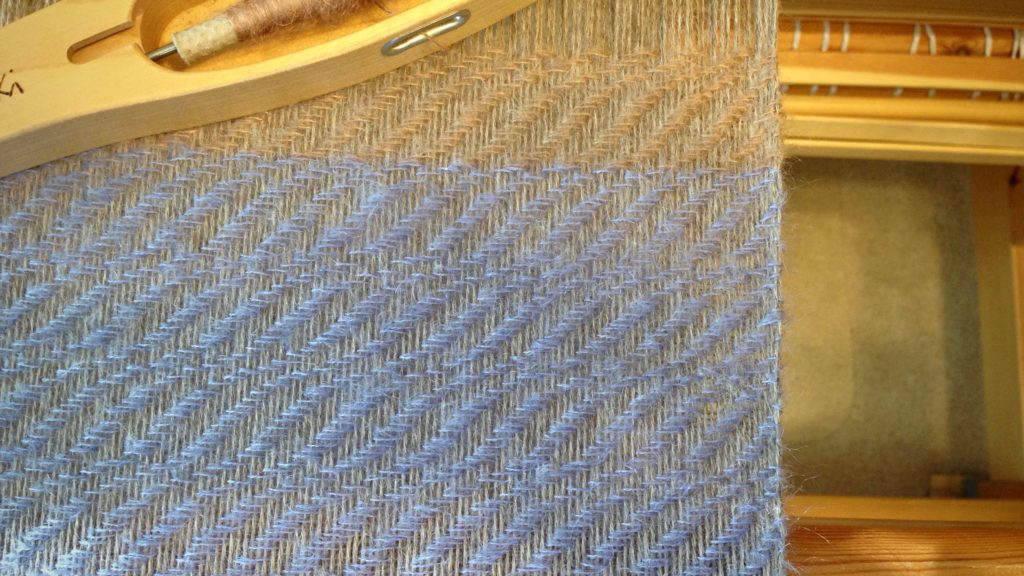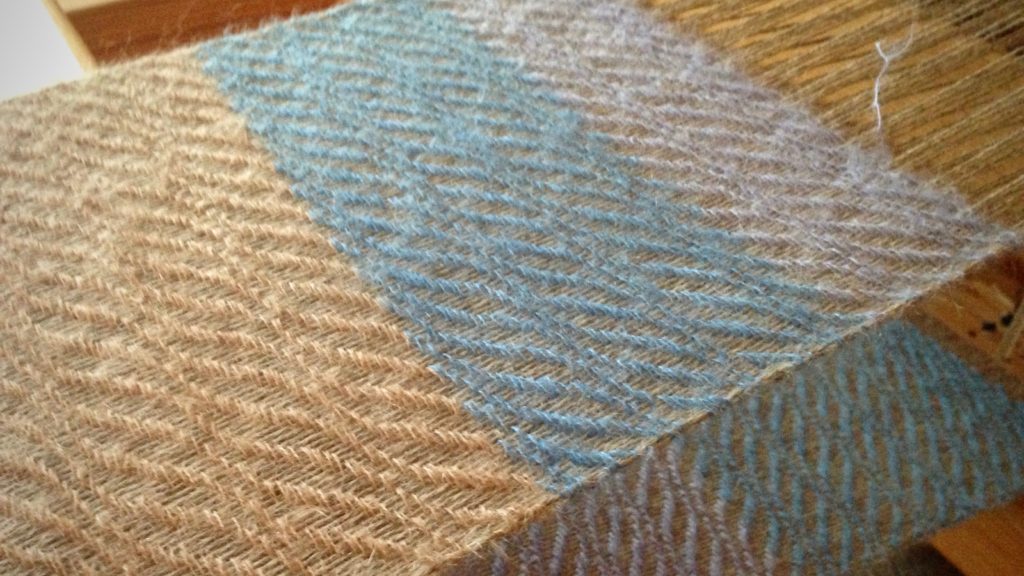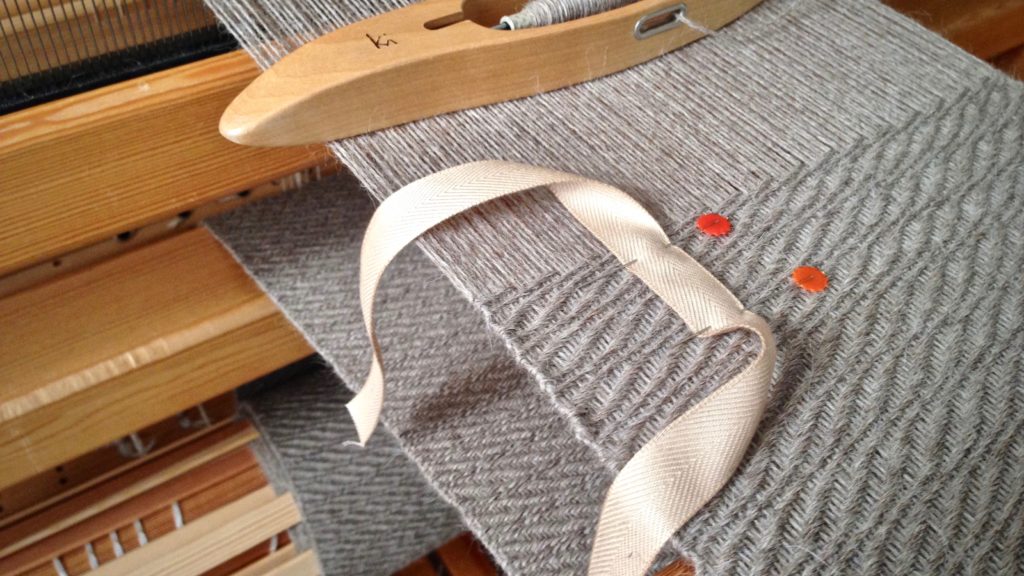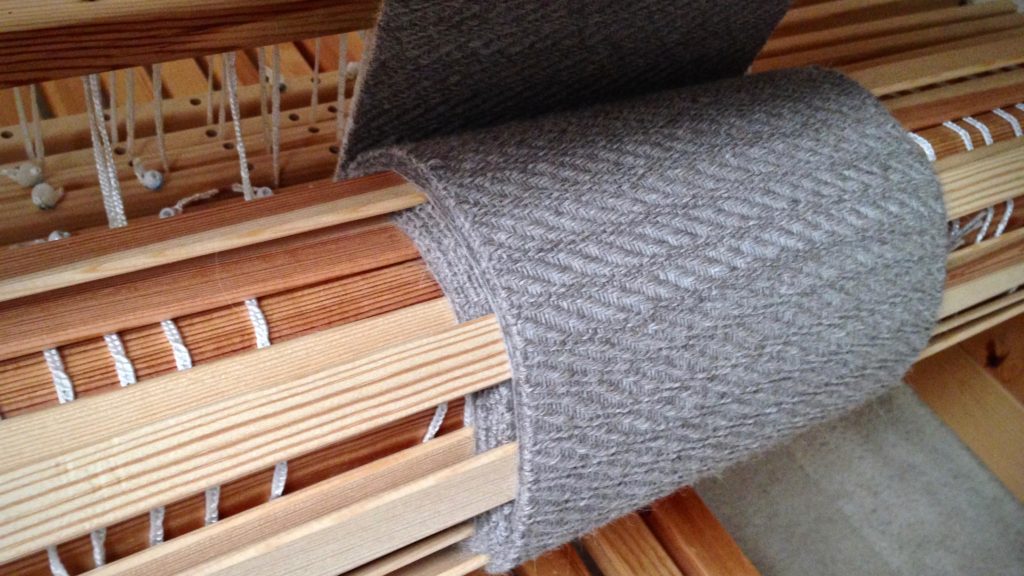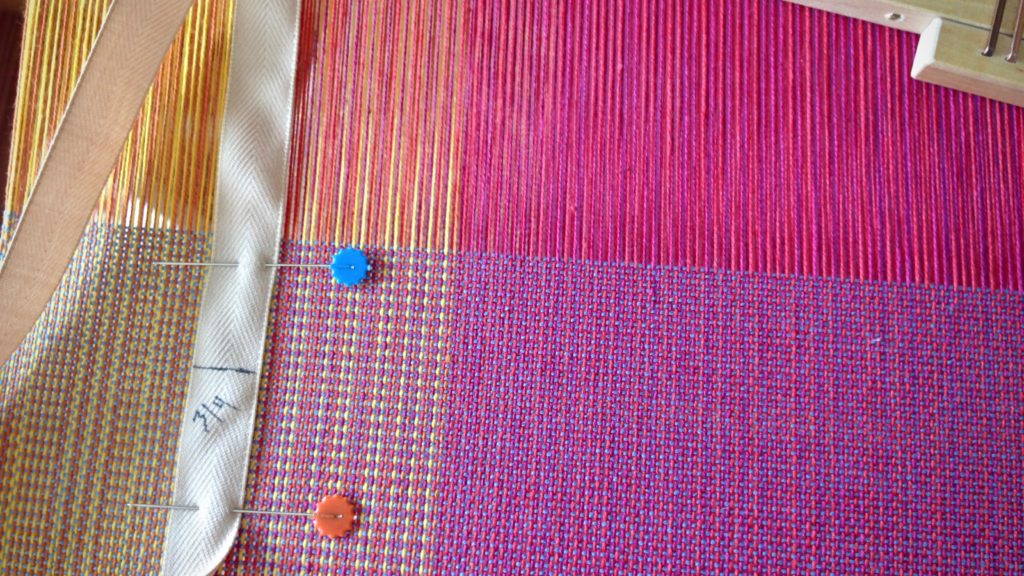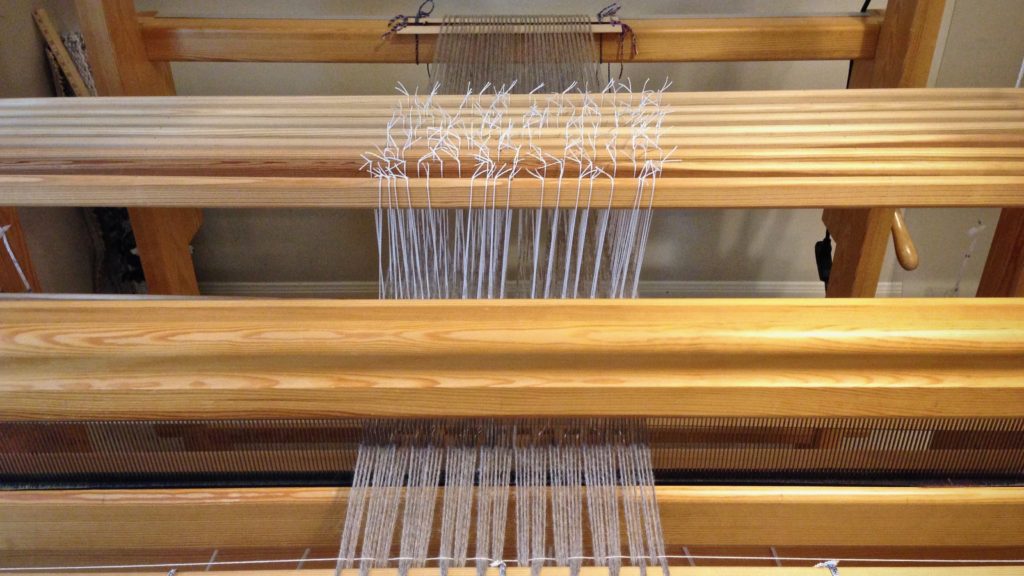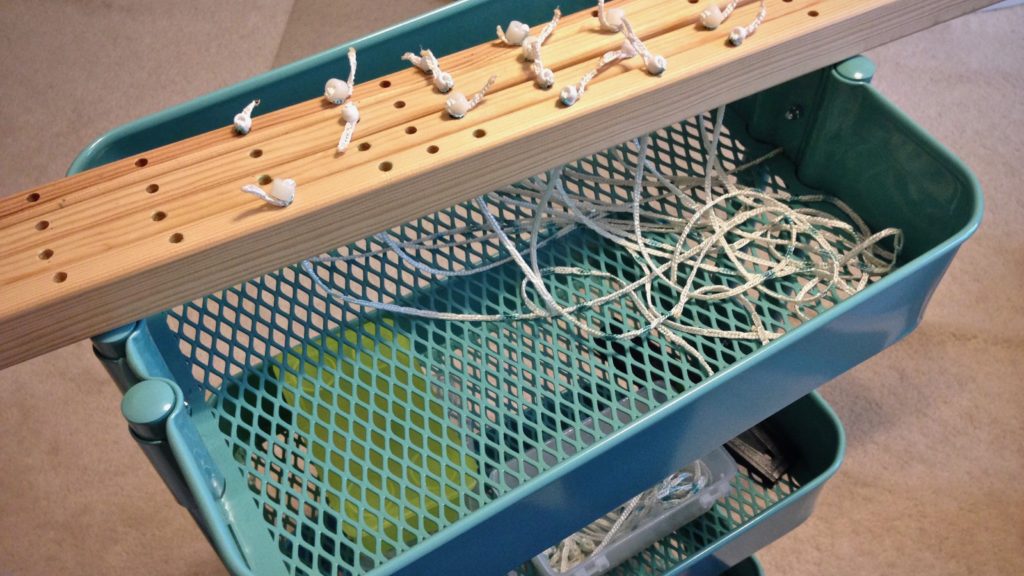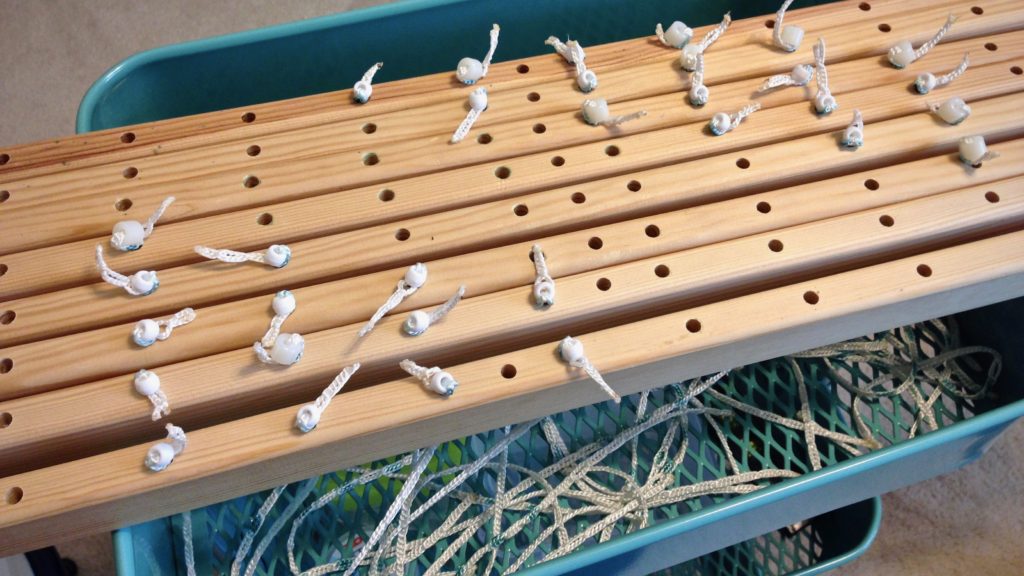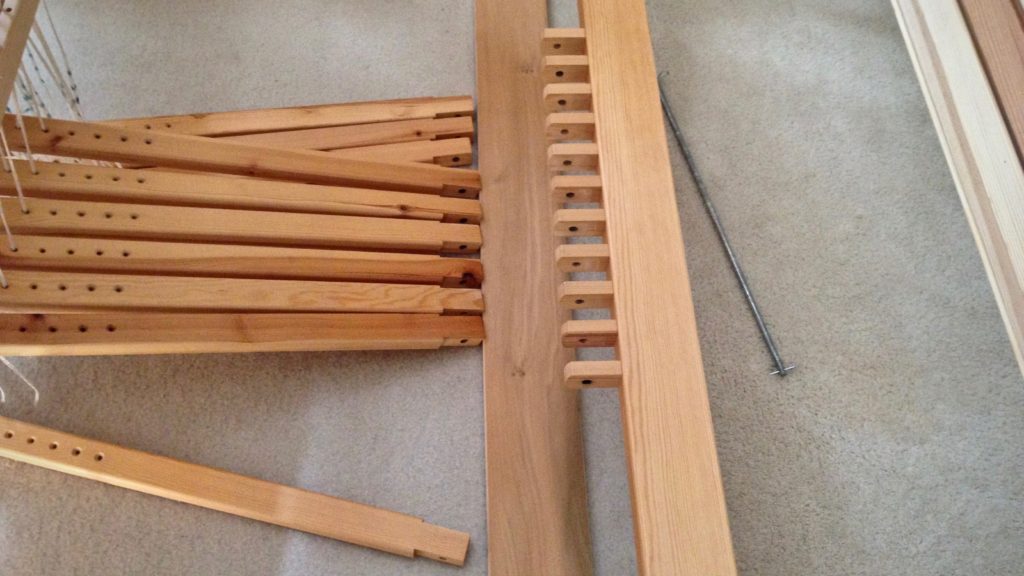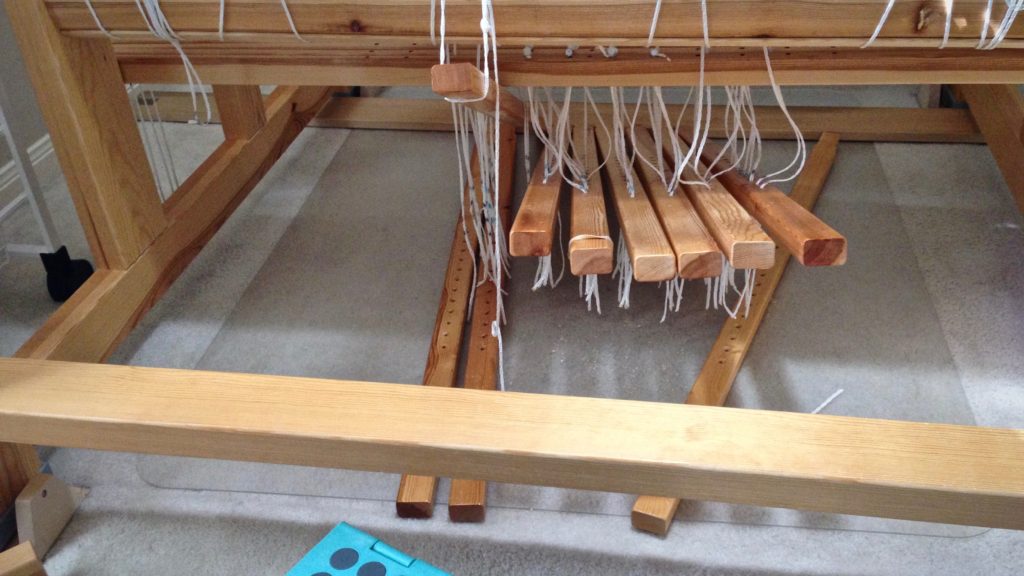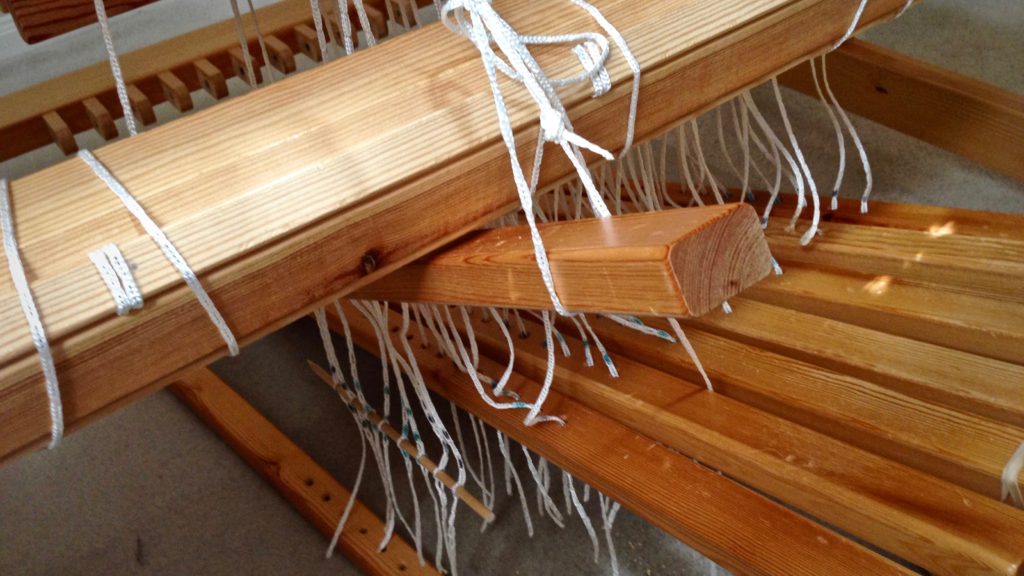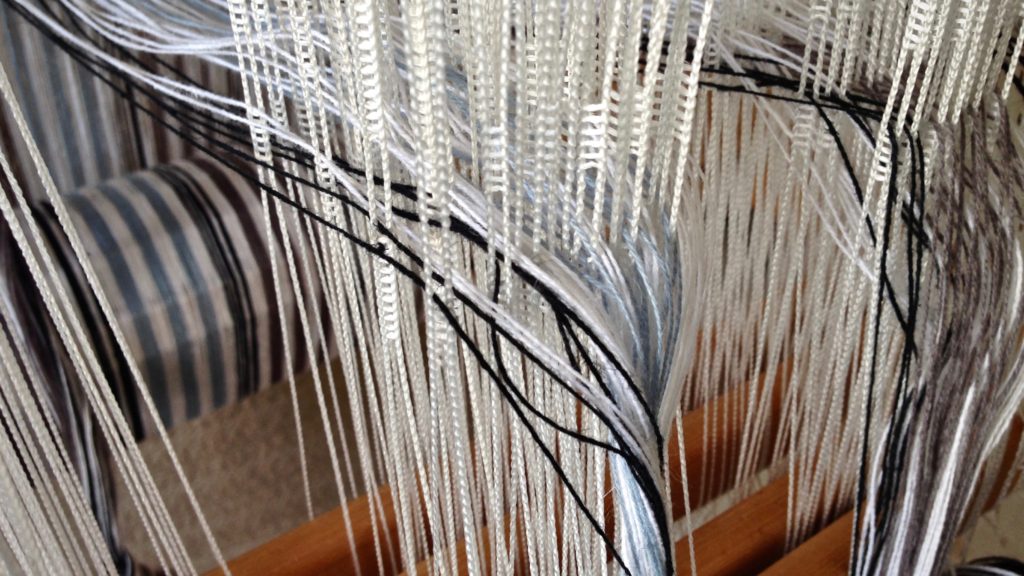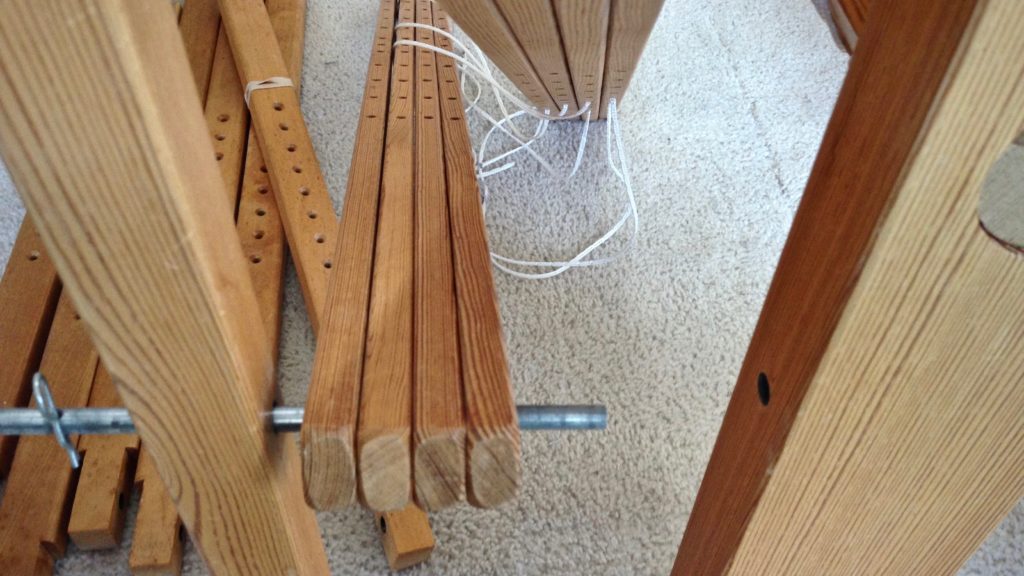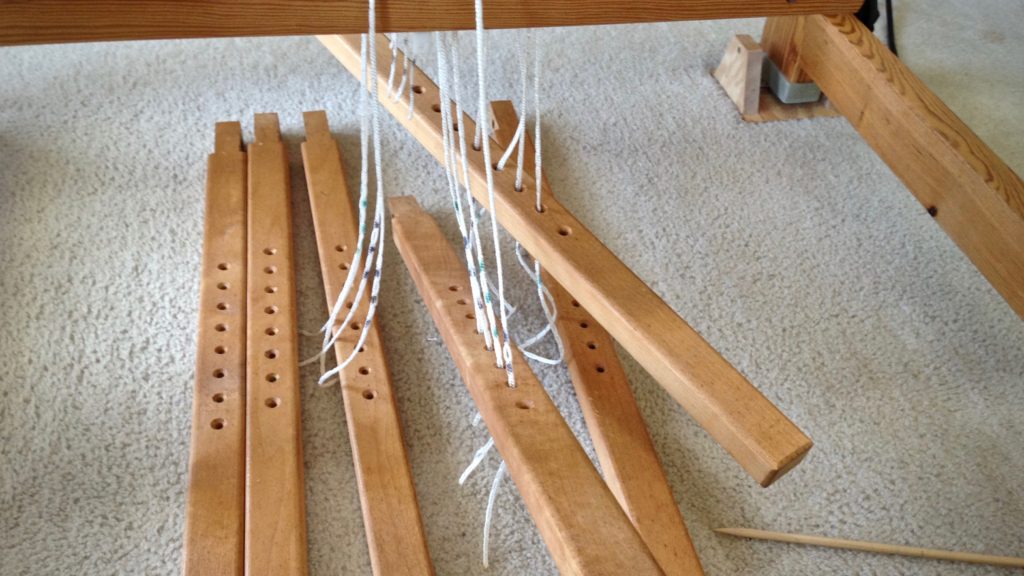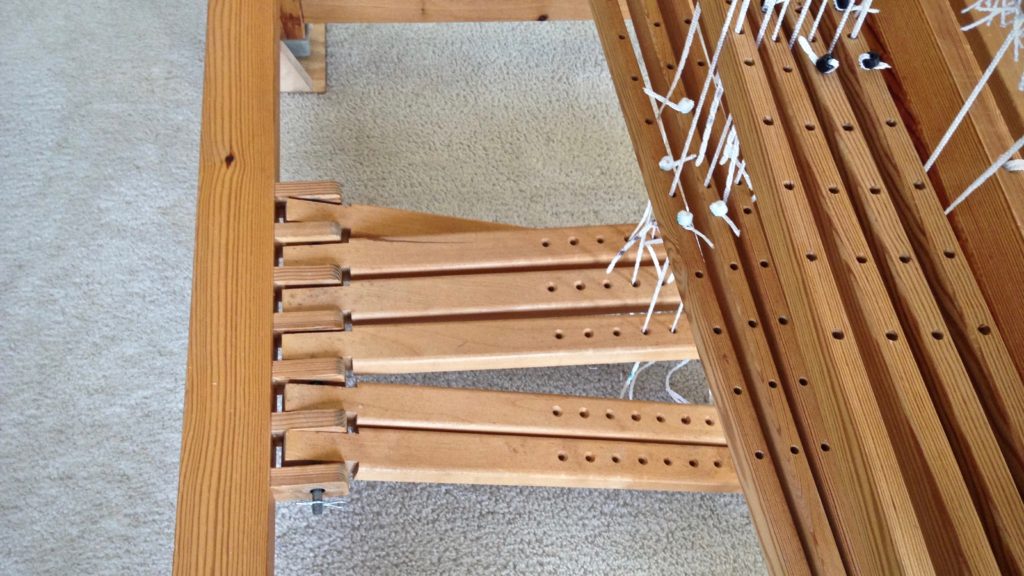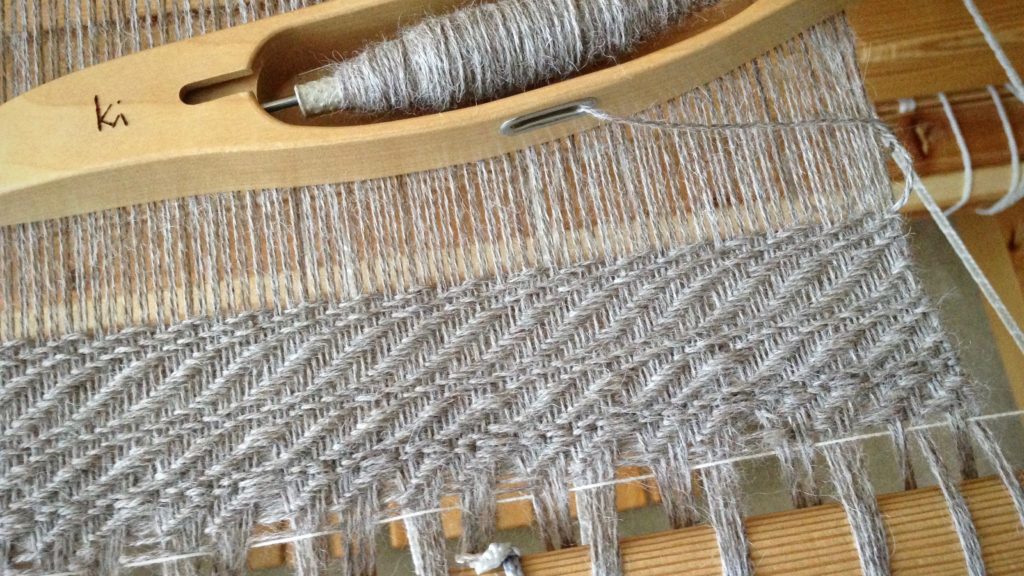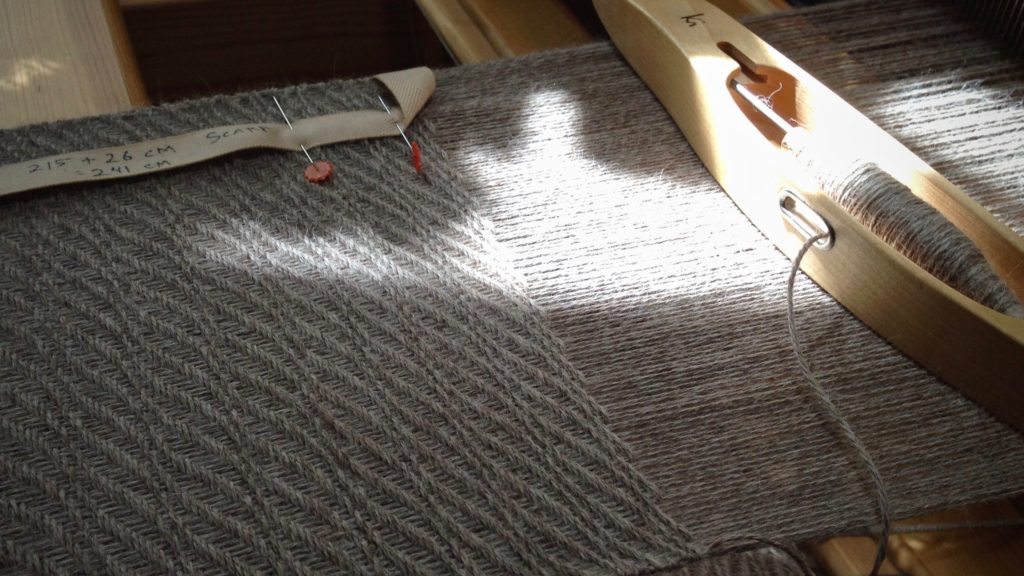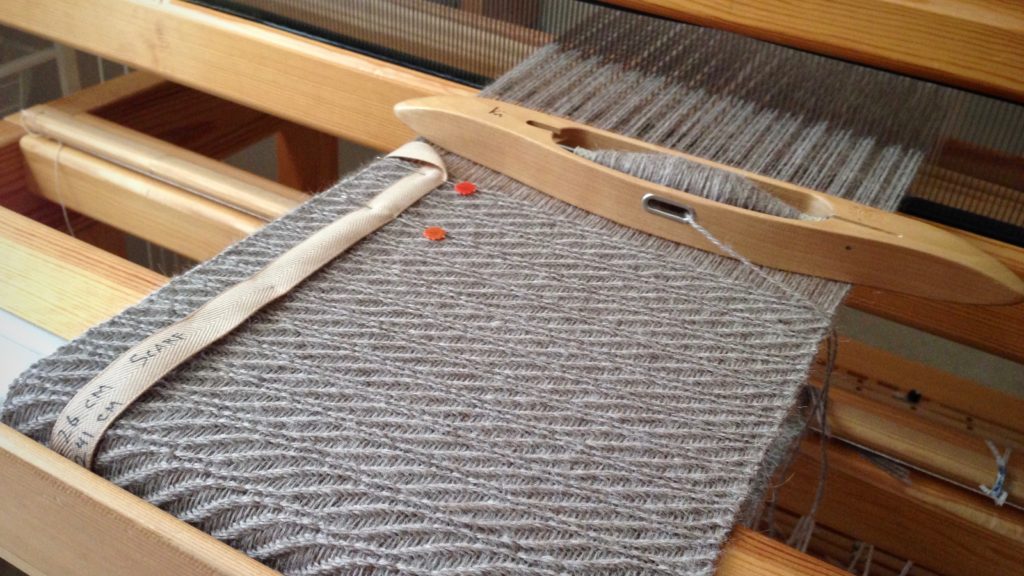The end of the warp is a fantastic way to try out ideas for future weaving projects. I have some kid mohair/silk yarn on my shelf in blue, lavender, and tan. I wove some pretty shawls with this angelic yarn a few years ago on my rigid heddle loom. Hmm… would kid mohair/silk work as weft on the alpaca warp? This is a good way to learn. If it works, I know I can do it again, but on a larger scale. If it doesn’t work, I know what to avoid. The point is to learn.
As handweavers, we learn by doing. And in daily life, we learn by doing–walking in this manner or that. We do not walk alone. The Lord stands ready to teach every inquiring soul. My prayer is, “Lord, teach me; help me understand; help me walk.” Sometimes what we learn surprises us. The trial weft may be even better than the one we originally planned.
May you enjoy lifelong learning.
Blessed,
Karen

